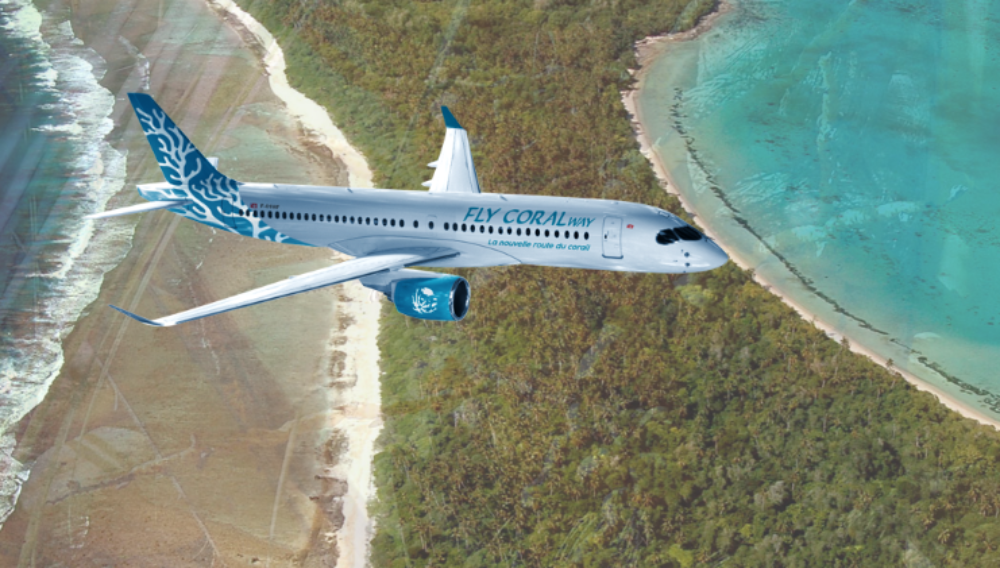A South Pacific startup airline wants to revisit the past with a contemporary twist. Louis Alphonse from the Wallis Islands and Olivier Bôle from French Polynesia are behind plans for a new airline based in French Polynesia to link South Pacific islands, with a focus on the French-speaking territories. The airline will be called Fly Coralway, and there are plans to get it into the air next year.

Fly Coralway wants to overcome connectivity issues in the South Pacific
Last week, Mr Bôle met the President of French Polynesia, Edouard Fritch, and senior government officials to discuss his plans for the airline.
Good air connectivity has always been an issue in this part of the world. There are several airlines in the region, but most are small and lack a decent network beyond their home islands. The absence of decent connectivity has long hindered tourism and trade. That’s something Fly Coralway is keen to overcome.
From a traveler’s perspective, Fly Coralway plans to offer some tantalizing routes. On the books are links between Fiji and Tahiti, Samoa and Tahiti, Noumea to Wallis Island, Fiji to Wallis Island, and Samoa to Wallis Island.
Stay informed: Sign up for our daily aviation news digest.
Fly Coralway will channel TEAL’s old Coral Route
The planned network is a nod to the original Coral Route. In 1951, Tasman Empire Airways Limited (TEAL) began operating amphibious aircraft on a 30-hour milk run around the South Pacific. The airline nicknamed the route the Coral Route.
It flew from Auckland to Papeete (Tahiti), Laucata Bay / Suva (Fiji), Satapuala / Apia (Samoa), and Atalamai / Aitutaki (Cook Islands). It would have been an amazing ride. Fly Coralway will have some different destinations on offer, but the South Pacific milk run could be back. Alas, Fly Coralway will not be using flying boats.

Instead, the new airline is eyeing either Airbus A220-100 or Embraer E190-E2 aircraft. The regional jets are perfect for mid-range island hopping. Right now, Messers Alphonse and Bôle are tossing up their options. What they do know is that an aircraft seating between 100 and 130 passengers will work best in the region. They also plan to offer both a premium cabin and an economy cabin. While the premium cabin will match other regional premium cabin products in the area, the economy cabin will orientate towards a low-cost model with a focus on ancillary add ons.

Work well underway to get Fly Coralway into the air
Both men have extensive aviation industry experience in the region. They know their markets and how to target them. Passengers will range between price-sensitive locals island hopping for work or family reasons to high-end tourists moving between pricy resort holidays. Fly Coralway wants to see them both on their planes.
While the airline plans to start flying in 2021, they are not quite there yet. This year, Fly Coralway is organizing their traffic rights, licenses, certifications, aircraft decisions, initial recruitment to key positions, and IT platforms. Fly Coralway also wants to be fully compliant with national, European, and international regulations and safety standards.
Early next year, Fly Coralway plans to finalize its recruitment, its manuals and procedures for maintenance, operations, and management, negotiate some trade agreements, and commence some marketing and promotion.
By mid-2021, Fly Coralway hopes to be in the air. It may prove to be good timing. By then, international aviation and tourism could be ramping up again. After a long time stuck at home, a spell in the South Pacific would sound pretty good to a lot of people. With a bit of luck, Fly Coralway will be there to buzz them around, across their 2020s version of the old Coral Route.
[ad_2]
Source link



